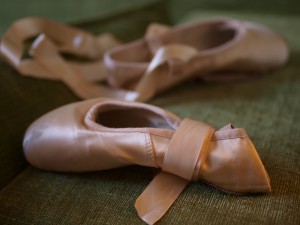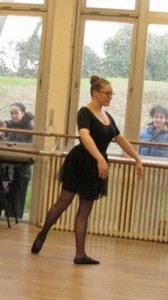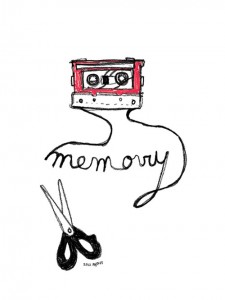 When I started pointe class last fall, I had no idea how to break in pointe shoes. Of course I heard of people bending the shank, banging the shoe on the floor, hammering or standing on the box and even slamming a shoe in a door frame. Remember the montage of dancers breaking in their shoes in the movie Center Stage? Since I didn’t know what I was doing, I knew that trying one of these methods was a surefire way to break (not break in) my pointe shoes.
When I started pointe class last fall, I had no idea how to break in pointe shoes. Of course I heard of people bending the shank, banging the shoe on the floor, hammering or standing on the box and even slamming a shoe in a door frame. Remember the montage of dancers breaking in their shoes in the movie Center Stage? Since I didn’t know what I was doing, I knew that trying one of these methods was a surefire way to break (not break in) my pointe shoes.
On the first day of class, my instructor had us put on the pointe shoes and walk, then run around in demi-pointe. Although I felt like I was shuffling around in wooden shoes, I knew this was the first step to actually breaking in the shoes … I just couldn’t imagine my feet being strong enough and lasting long enough to break them in successfully. I felt more discouraged when I releved – my feet looked like tiny stilts.
A bit depressed and embarrassed, I lamented about my first class to my neighbor, a ballet dancer who performed the Sugarplum Fairy role in a professional DC-area Nutcracker production just 8 months after having twins. “Oh … maybe I’m in over my head. Maybe I’m not ready. Maybe I shouldn’t even be trying pointe,” I sighed.
She scoffed, “That was your first day! And you had on new pointe shoes! What do you expect?” She paused and thought for a moment. “Try this: wear your pointe shoes in the house, but put socks on over the shoes. Walk around the house in demi-pointe while doing your normal tasks, like the laundry, dishes, etc. with socks over the shoes.”
I wasn’t sure if this was going to work but tried it anyway. At least this method seemed safe (for me and my shoes) and built onto what I did in class. After a few of 20-minute sessions of walking around in pointe shoes in demi-pointe (that is all my feet could stand at the time), I felt like the shoes were not so stiff … and I felt less discouraged. Of course breaking in the shoes didn’t happen overnight and more exercises in class were needed to break them in, but I felt encouraged by this low-maintenance, convenient method that worked from my own body heat and foot strength. I liked this method because:
- the socks kept in body heat to warm up the shoes, which of course softened the shank and box, allowing them to mold to shape of my foot;
- I wasn’t breaking or bending the shank in random places;
- the socks protected the shoes from being scratched up;
- I didn’t worry about slipping on the tile floors with the socks’ traction;
- I was strengthening my feet at same time and;
- this method took no time out of my day since I could incorporate it in my everyday activities – especially important for adult dancers!
By my second class, the shoes felt much more comfortable and I could bend and flex my foot to roll up and releve. I can’t say that walking around demi-pointe in pointe shoes covered with socks broke in my pointe shoes completely, but it was an encouraging start.





